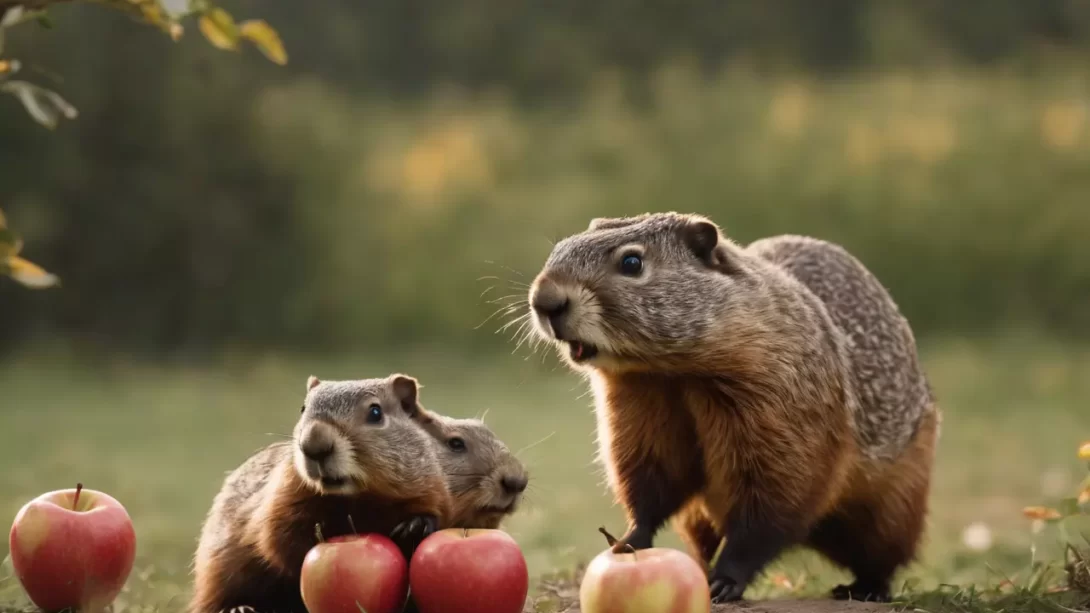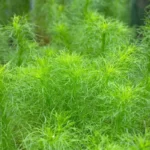Groundhogs, also known as woodchucks, are a common sight in many North American landscapes. These creatures, while often adored for their burrowing habits and groundhog day folklore, can pose a challenge for gardeners and fruit growers. A question that frequently arises is whether groundhogs eat apples, a common fruit in many backyards. This article seeks to explore the dietary preferences of groundhogs, with a specific focus on their consumption of apples.
Groundhogs
Groundhogs are a species of rodent known for their extensive burrowing activities. Typically found in open fields, woodland edges, and gardens, these animals create elaborate underground burrows for shelter and hibernation. Groundhogs are primarily herbivorous, feeding on a wide variety of vegetation. Their diet usually consists of grasses, plants, fruits, and sometimes tree bark. Understanding the dietary habits of groundhogs is essential in determining whether apples are a likely food choice for these animals.
Groundhogs and Fruit Consumption
Groundhogs are not fussy eaters and are known to consume various types of fruits available in their habitat. Fruits, being a natural source of sugar, provide essential energy to groundhogs. Apples, in particular, can be an attractive food source due to their availability, especially in suburban areas where apple trees are common in gardens. The presence of ripe or fallen apples can therefore be enticing to groundhogs, encouraging them to visit gardens more frequently.
Apples as a Food Source for Groundhogs
Apples are particularly appealing to groundhogs for several reasons. Firstly, the natural sweetness and high sugar content of apples provide a quick energy source, which is beneficial for these animals, especially in preparation for the winter months. Additionally, apples are a good source of hydration and various nutrients, which can be valuable for groundhogs’ diet. However, while apples are nutritious, they are not a staple in the groundhog’s diet but rather a seasonal treat that they might encounter and consume when available.
Observations of Groundhogs Eating Apples
Many gardeners and wildlife enthusiasts have observed groundhogs eating apples, especially in areas where these fruits fall to the ground from trees. These observations indicate that groundhogs will readily take advantage of apple availability, particularly in late summer and early fall when these fruits are ripe. There have been instances where groundhogs are seen climbing trees to access apples, although they generally prefer to forage for what’s easily accessible on the ground. Such behaviors underscore the opportunistic feeding habits of groundhogs.
Protecting Apple Trees from Groundhogs
For those looking to protect their apple harvest from groundhogs, several strategies can be effective. One approach is to pick up fallen apples regularly, reducing the attractants for these animals. Installing fencing around apple trees or gardens can also be a deterrent, although it should be sturdy and extend underground to prevent groundhogs from burrowing underneath. Another method is to use repellents, either commercial or homemade, though their effectiveness can vary. It’s also beneficial to keep the area around apple trees clear of tall grasses and debris, which can provide cover for groundhogs.
Additional Deterrents and Garden Management
In addition to physical barriers and cleanliness, there are other deterrents that can help protect apple trees from groundhogs. Motion-activated sprinklers can startle and deter groundhogs from entering the area. Natural repellents, like garlic or pepper sprays, can also be used to make apple trees less appealing to these creatures. Some gardeners have found success in planting certain herbs or flowers that are known to be natural groundhog repellents around their apple trees, creating an additional layer of defense.
Coexisting with Groundhogs
While groundhogs can be a nuisance to gardeners and fruit tree owners, it’s important to understand and respect their role in the ecosystem. Groundhogs are not only foragers but also serve as prey for larger predators and contribute to soil aeration through their burrowing activities. Finding a balance between protecting your garden and allowing wildlife to coexist peacefully is a key part of sustainable gardening and wildlife management.
Conclusion
Groundhogs do eat apples and can be drawn to gardens and orchards where these fruits are available. While this can pose challenges for apple tree owners, there are several effective strategies to protect your fruit trees from groundhog damage. Employing physical barriers, regular garden maintenance, and natural repellents can help keep groundhogs at bay while preserving the harmony of your garden ecosystem. Understanding the dietary habits and behaviors of groundhogs is essential in developing a successful coexistence strategy, allowing both the garden and its wildlife inhabitants to thrive.




